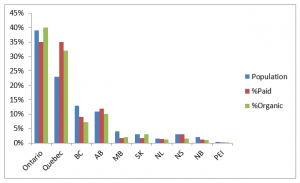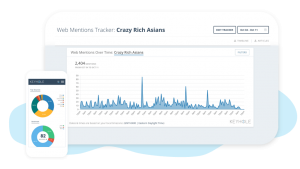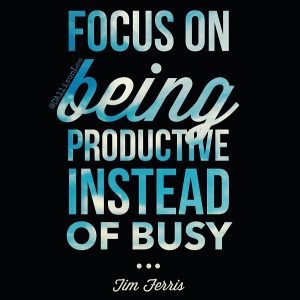Conversion tracking could not be a bigger deal when it comes to seeing success with PPC campaigns. If you’re not tracking your conversions, how in the world are you going to know what’s working, or what’s not working, or where to put your budget? It’s mind-boggling to me that some folks aren’t using it.
![]()
That said, I also sympathize with marketers that have to set up conversion tracking on a site where URL rules aren’t an option. With these kinds of sites, it takes a bit more work to set up tracking, and it can be a bit confusing.
If you’re running ads in Microsoft (hint: if you’re running them in Google, you should at least take a look at Microsoft) and you have one of those frustrating sites, then this post is for you. Here’s how to set up Event Tracking in Microsoft Ads.
Why event tracking?
You know the importance of conversion tracking in PPC. But why event tracking? In case you need a little more explanation on why to use event tracking, or you’re rude and totally skipped the intro, I’m going to answer this question by extrapolating on the traditional conversion tracking option in Microsoft Ads.
When you create a Microsoft Ads account, you are given a UET tag to apply to all pages of your website. This pixel tracks all users who go to your site and can also track conversions. So, the simplest way to track conversions is to set up URL rule goals, as with the screenshot below:
![]()
For this option, you set up a URL rule that will fire when someone hits your thank you page. Whenever someone visits that page after clicking on one of your ads, you’ll see conversion performance attributed to that campaign.
But if you don’t have dedicated thank you pages—because you have an iframe or you send users offsite, for example—you won’t be able to use this option to track your Microsoft Ads conversions. This is when event tracking comes into play. We’ve covered event tracking in Google Ads, but now it’s time to talk Microsoft.
How to set up Microsoft Ads event tracking with Google Tag Manager
We’re going to be jumping back and forth between the Microsoft Ads and Google Tag Manager interfaces quite a bit for this tutorial, but I’ll do my best to call out where we are to make it easy to follow.
1. Create a new conversion in Microsoft Ads
The first step is to start creating your conversion goal in Microsoft Ads. In the new interface, you can head up to the “Tools” section, then choose “Conversion goals” under the “Conversion tracking” column.
![]()
Then choose “Create New Conversion Goal” toward the bottom/middle of the screen.
Give your new goal a name and then choose “Event” as the Goal Type.
![]()
You’ll notice there is an alert that pops up that says you’ll need to customize your UET tag to utilize event tracking. Don’t worry, we’ll get to that in a little bit.
You’ll then be taken to a screen that looks quite a bit different than the URL rule example we have above.
![]()
Here you’re given multiple fields to add values to, including:
- Category
- Action
- Label
- Value
Each of these can be set to different matching parameters that will determine how your goal is tracked. Depending on how you plan to set up goals, you can set these to Equals to, Contains, Begins with, or Regular Expression.
Before we set these parameters, let’s hop into Google Tag Manager and get some specific triggers set up.
2. Create your custom tags in Google Tag Manager
In Google Tag Manager, we’re going to need to create a new tag and trigger for this custom event goal.
With the original UET tag that you added to all pages of your site, you’re able to track the URL goals like we discussed above. But like the warning said, if we want to track custom events that aren’t trackable through URL rules, we’re going to have to customize our UET tag. That means creating a second UET tag to add to the site.
![]()
Start by creating a new tag in Google Tag Manager, then selecting “Bing Ads” from the integrations list.
![]()
You’ll then need to grab your Bing Ads UET Tag ID from the Microsoft Ads interface and add it to the open field. You can find this in the UET Tag section of the conversion tracking navigation.
![]()
Lastly, change the Event Type from “Page Load” to “Custom.” This opens up the fields so we can add the Event Category, Action, and Labels we saw in Microsoft Ads. We’ll fill these out in just a minute, but first we need to create the trigger for the custom event action we want to track.
3. Create your custom triggers in Google Tag Manager
Below the tag setup, you’ll see “Triggering.” If you click that section, you’ll be prompted to choose what type of trigger you want to set up in Tag Manager.
There are loads of different kinds of triggers you can use through Google Tag Manager, so take a look through them all and see what you’re needing to track.
For the sake of this post, I’m going to track on-site video views, but you can choose whichever trigger makes sense for you.
![]()
In the image above, I chose YouTube Video as my trigger, and I set up my parameters as needed.
4. Add event parameters to your GTM trigger
Now that we have our trigger in place, we need to finally set the event parameters for our tag.
![]()
I’ve added the Category of Video View, Action of Watch, and Label I set as YouTube Embeds.
Now we can hit save on our Tag and Trigger in GTM, but it might make sense for you to write down what your parameters were because we’ll need them for the next step in Microsoft Ads.
5. Add your event parameters to your Microsoft Ads custom event goal
Here’s how the same values look for the event parameters in Microsoft:
![]()
You’ll see that they’re exactly the same as we have in Google Tag Manager.
One thing to note here, each value you add to the parameters narrows the goal that you’re trying to track.
For example, if you had multiple triggers in Google Tag Manager that fired for Video View Event Category, but only a few that had the same Action and Label, you could set up a goal that looks like this.
![]()
Here, we’re tracking all events that have Video View as the Event Category, regardless of what they have as the Action or Label.
Depending on how you set up your on-site triggers and how specific you want your goal to be, only add the values for each parameter that you want to track.
Once you’re finished, you can choose your Goal Category, Revenue Value, Count, and Conversion Window.
Then save your goal and you’re all set!
Optimize your Microsoft Ads campaigns with event tracking
There are times where simple URL rules aren’t enough to track the actions we want to see on our website. But with a little patience and help from Google Tag Manager, we can track nearly any action someone can take on our site and optimize for it in Microsoft Ads Campaigns.
Digital & Social Articles on Business 2 Community
(44)
Report Post




